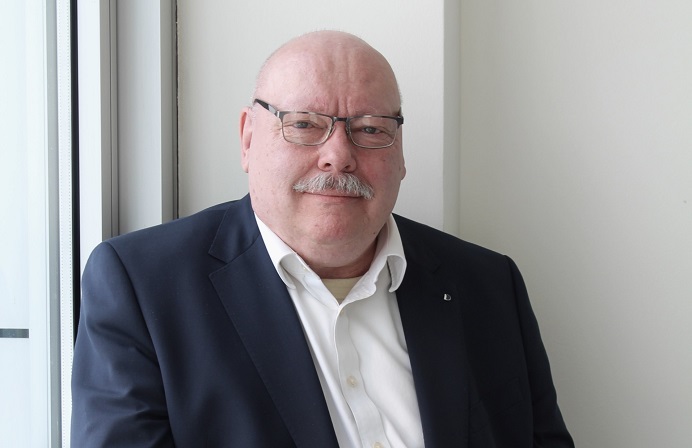
Sainsbury: What are your priorities for the next 12-18 months?
Korompis: Over the last five years, we have been able to shift our customer transaction from branch to e-channels. Today 65 per cent of customer transactions are from the electronic channel.
For the next 12-18 months, we will continue the e-channel journey by developing mobile apps that will run on smartphone platforms like Android, Blackberry and iPhone.
Our other priorities is to increase security of our ATM cards, by starting the project of migrating the ATM card into Chip Card.
We also plan to enhance our e-channel architecture by implementing a service-oriented architechture middleware that will serve two objectives; flexibility for internal and external messaging using web services, and advanced functionality on payment transactions.
Sainsbury: How are you managing the bandwidth issues associated with Indonesia, as an archipelago with many remote locations?
Korompis: Currently the situation is better compared to where it was six years ago, and telecommunication companies are setting up landlines into more locations in Indonesia.
There are still some remote area that dont have landlines, and in those areas we are really focusing on VSAT (satellite). So we must make sure that our applications can run on a small bandwidth. We have been testing over small bandwith like 32K to make sure applications can run in the more remote locations.
Sainsbury: Given the awards that Bank Danamon has received for mobile and internet banking, what are you doing to maintain a competitive edge?
Korompis: We always do two things: Firstly we listen and ask what the customer needs, and secondly we benchmark ourselves to other key players, not only in Indonesia, but throughout the region and the world.
Based on these two inputs, we enhance our mobile and internet banking features.
For example, previously our internet banking only used the central bank RTGS and clearing facility for transfers to other banks, and this has the limitation that transfers are limited to the central bank’s operation time.
Listening to our customer feedback, we recently launched a new a 24×7 online transfer to other banks using the ATM switch network. Just one month after launch, there are 30000 transactions of online transfers to other banks happening through internet banking.
We also enhanced the bill payment capability by adding more telecomunication bill payment options, school tuition payments, utility payments, and the ability to buy airline tickets through our channels.
Sainsbury: What notable examples have you seen of financial organisations innovating to acquire and retain the growing Gen-Y customer base?
Korompis: Gen Y customers are really tech savvy, and actively use PCs, email, video games, mobile phones and the internet. They want to use technology in their daily activities. Gen Y customers will not come to a branch just to do simple transactions; they want it to be availabe on the internet or mobile.
Banks are racing to create mobile apps for Android, iPhone and Blackberry platforms. These mobile apps must support the Gen Y customers doing their transactions, and other features that support their lifestyle. For example, besides the transactions, some banks put fun features into the apps such as location-based promotions.
Sainsbury: How do you balance supporting a social media presence with the risk of reputational damage?
Korompis: It is estimated that in Indonesia that there is 47 million Facebook users and 30 million Twitter users. With this huge number, aside from doing promotions and maintaining communities through social media, banks can also now monitor what our customers are saying about us.
Based on this monitoring, if we see negative feedback for the bank being posted in social media, it will be followed up by our customer care unit and they will try to solve it. This reduces the negative comments that we receive and allows us to avoid reputational damage.
Sainsbury: What do you consider the best opportunities to leverage customer data to deepen engagement?
Korompis: I believe it must be done by combining data analytics and doing targeted marketing on customer touch points like digital channels and branches.
Currently in consumer banking, we already have the analytics unit that works on the data and generates targeted marketing for cross-selling and upselling. The data that they produce is being used for offering the right products to our customers through our e-channels and branches. So when they access our channels through, for example, the ATMs, a personalised offer will be shown and they can choose to accept or decline it.
By doing this we can reduce our telemarketing efforts, which is more costly compared doing targeted marketing through the e-channels.
Sainsbury: What tools or references keep you abreast of emerging technology trends?
Korompis: I always keep updating myself through discussions with our technology partners, and I am always requesting that they present their recent products or innovations to me. Secondly I keep my link with my university active, and once a month I am teaching at the IT masters degree program in one of the top universities in Jakarta. By doing this, besides sharing my knowledge to the student, I also keep my knowledge up to date by having dicsussions with the technology researchers at the university as well.
Sainsbury: What innovation and business leaders inspire you, and why?
Korompis: I am inspired by Google as a company and its leaders, Larry Page, Sergey Brin, and Eric Schmidt. They have changed the world through their innovation and technology.
Google’s search engine has helped a lot of people with many different needs, but on top of that, this free service has changed the advertising industry. The cost-per-click business plus adwords have generated multi-billion dollar revenues. And that’s not to forget the Android OS which already have the highest market share compared to other smartphone OSes.
From this company we can learn creativity and product innovation that never stops. They see all things as a starting point and not an ending point. Google is a great business case study where it creates IT infrastucture that runs as a free service for the user, but generates billion-dollar revenues for the company.
Sainsbury: With respect to career development, what is the best advice you ever received?
Korompis: There was some advice that was given to me by my teacher: “When you are on the driving seat, always give your self a time to think and choose the right road for your journey.”
Sainsbury: Every leader, particularly at your level, has a legacy they wish to be remembered for. What is yours?
Korompis: I want to be remembered for implementing new channels in Bank Danamon, from the ATM with targeted marketing capability, CDM, Internet Banking and mobile banking. The other thing I would like to be remembered for is mordenising the bank platform by migrating the cards system from mainframe into open platform.





